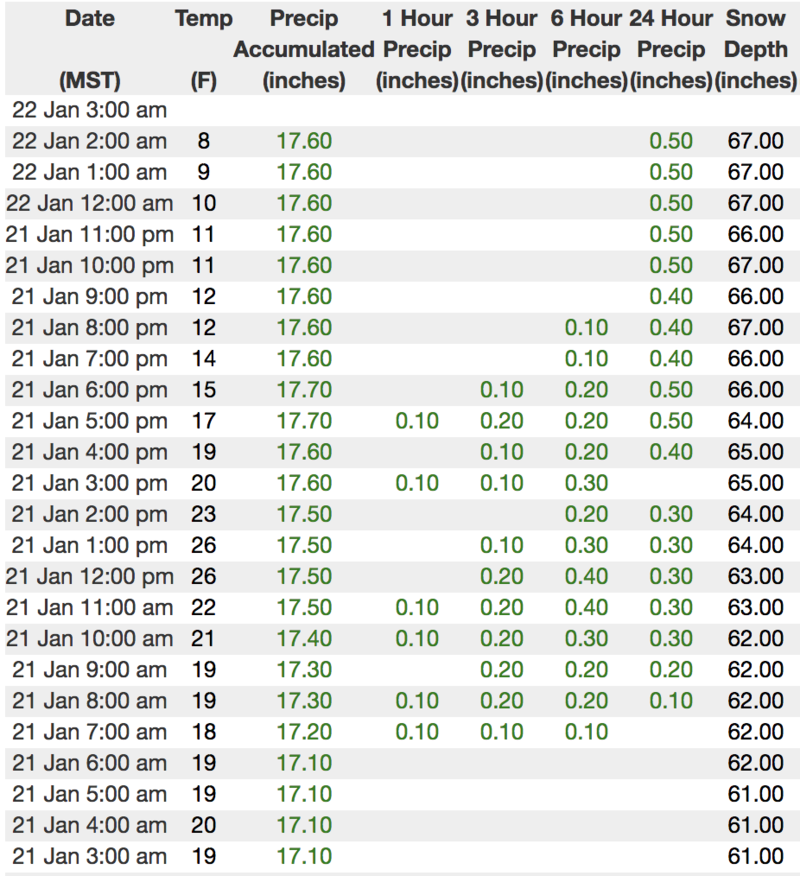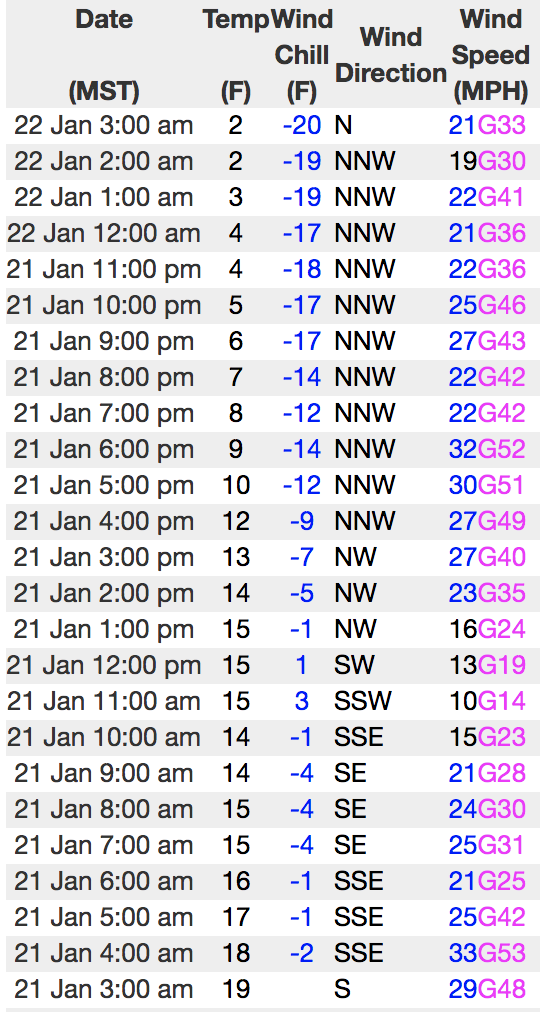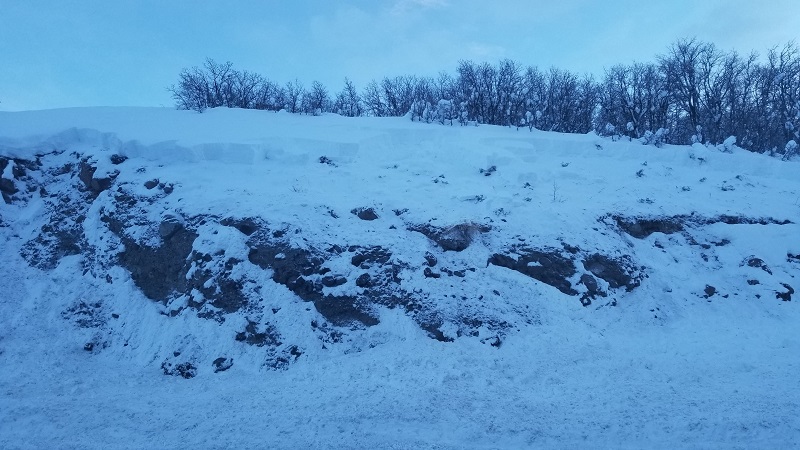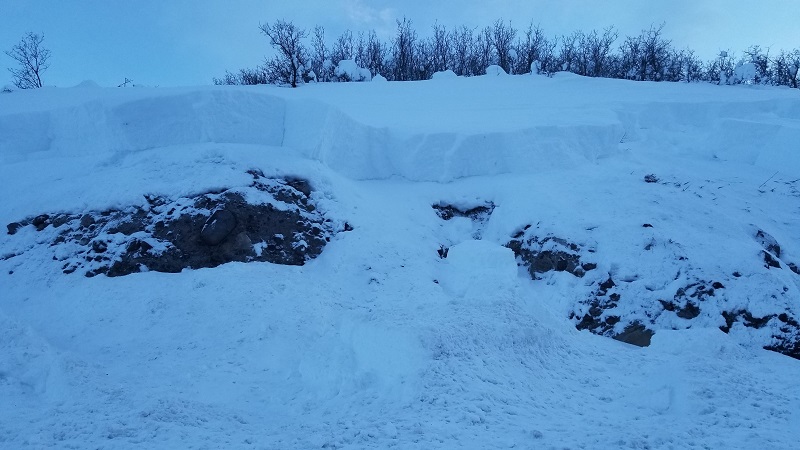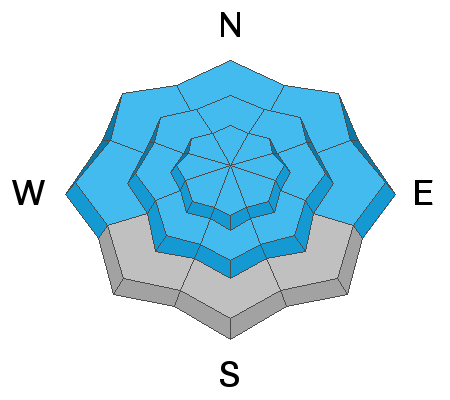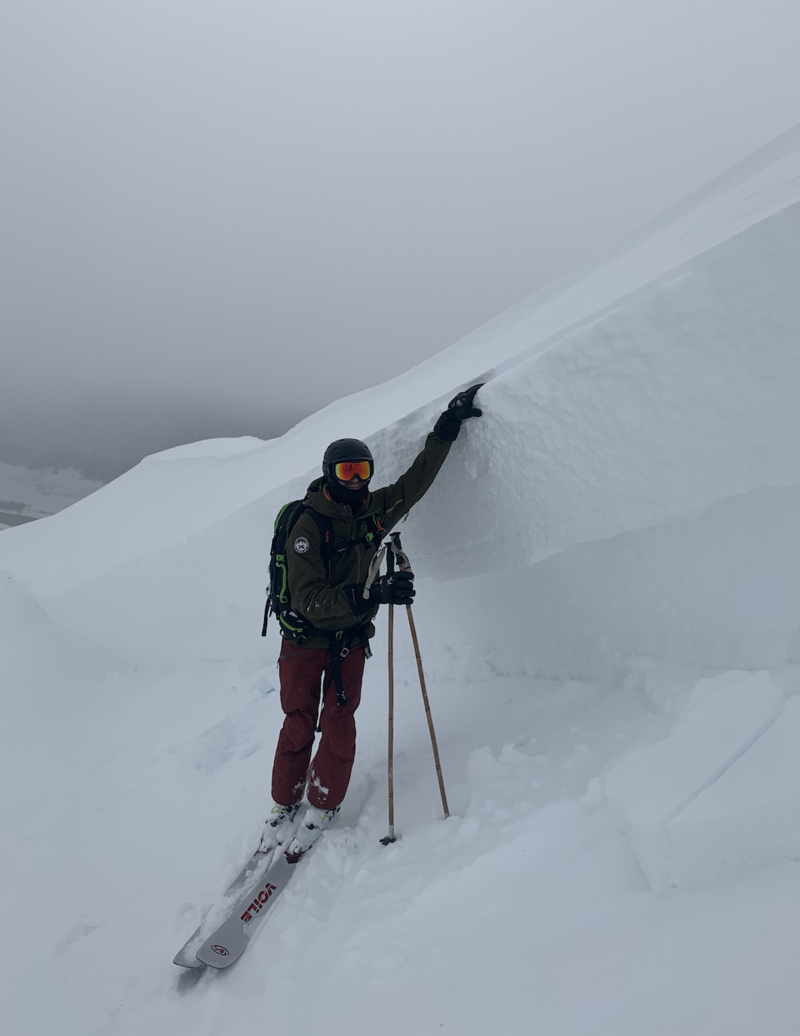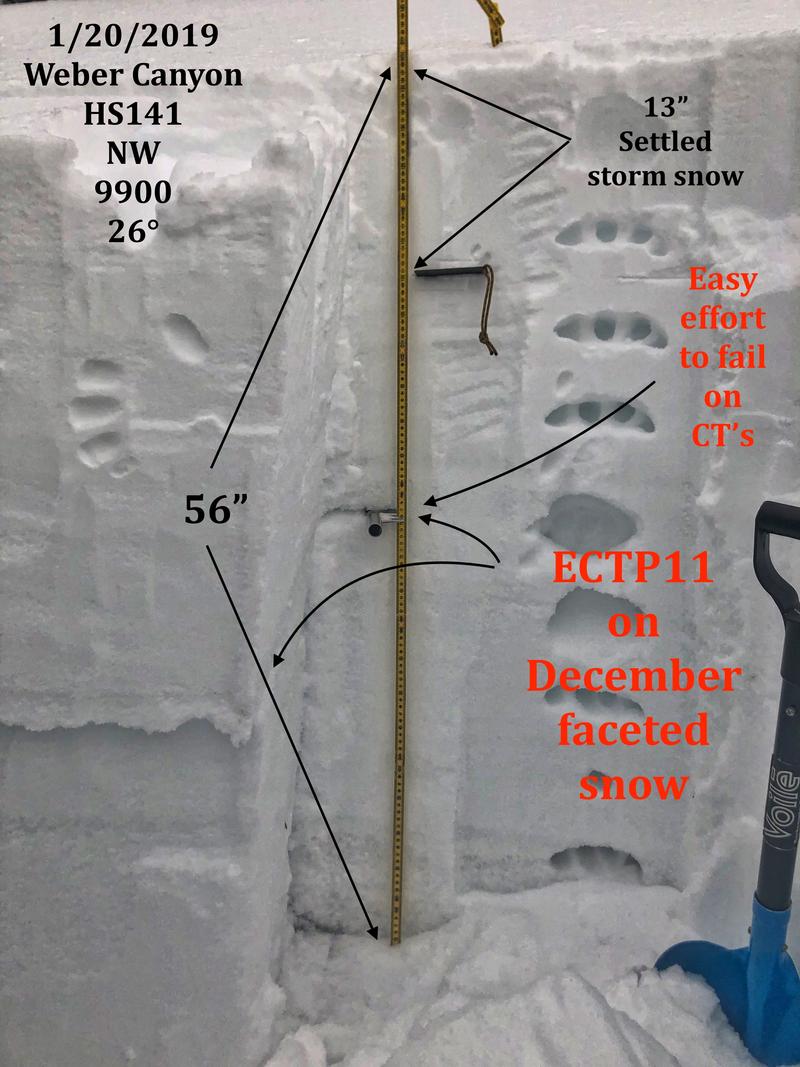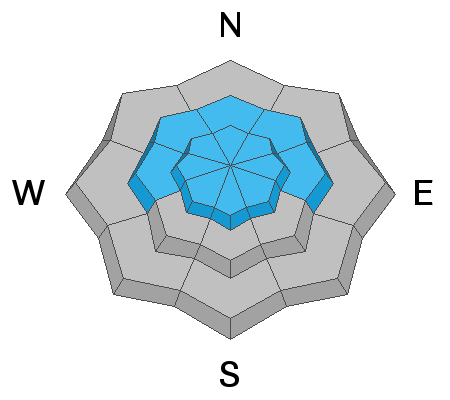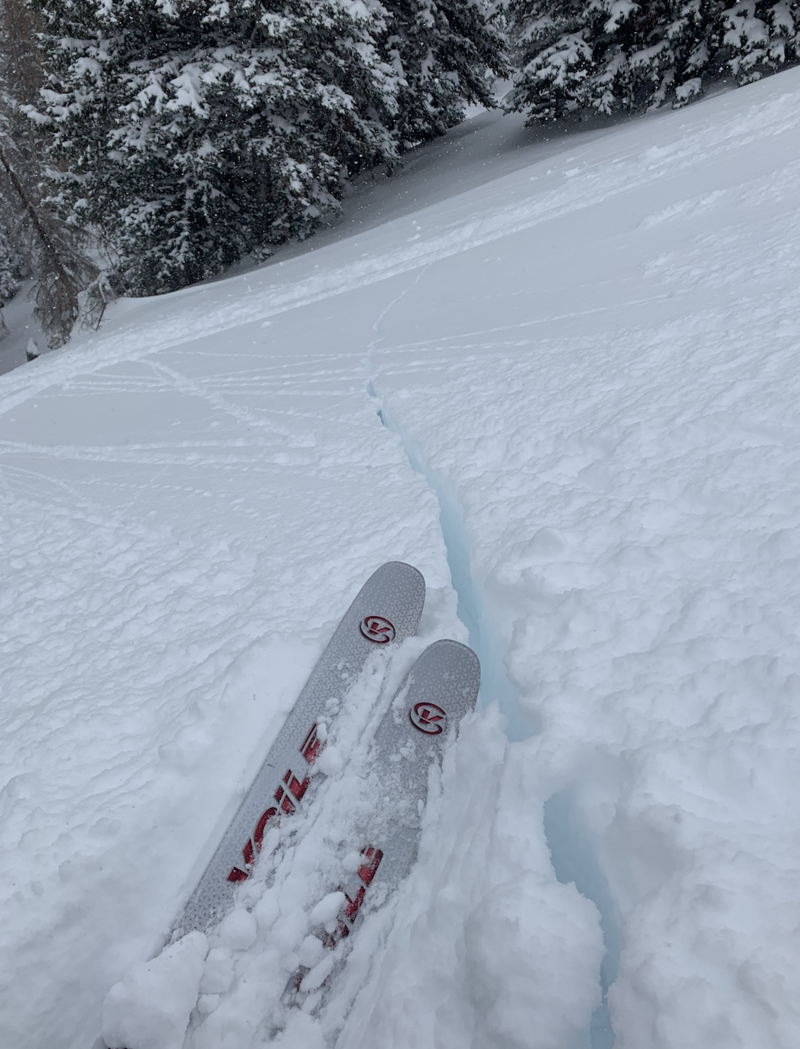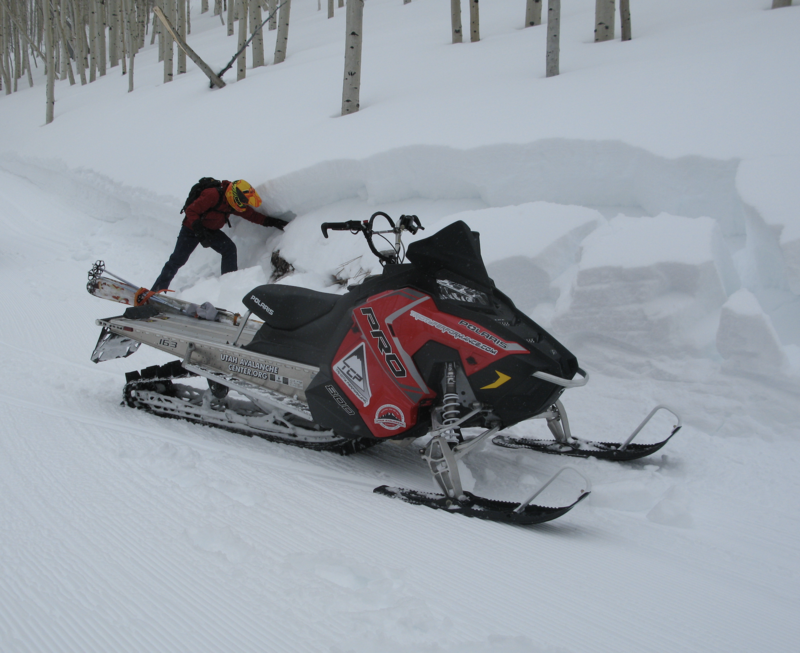Forecast for the Uintas Area Mountains

Issued by Craig Gordon on
Tuesday morning, January 22, 2019
Tuesday morning, January 22, 2019
DANGEROUS AVALANCHE CONDITIONS CONTINUE ON THE EASTERN FRONT
In the wind zone at and above treeline the avalanche danger is HIGH. Deep, dangerous, human triggered avalanches are LIKELY on all steep wind drifted slopes, particularly those with an easterly component to their aspect.
Winds are penetrating steep terrain at mid elevations, where you'll find CONSIDERABLE avalanche danger and human triggered avalanches are PROBABLE.
In either case, any avalanche that breaks into deeper buried weak layers near the ground will result in a scary and potentially unsurvivable avalanche.
MODERATE avalanche danger continues on steep, lower elevation slopes facing the south half of the compass and human triggered avalanches are POSSIBLE.
Here's your exit strategy... simply head to big open meadows with no steep terrain above, adjacent, or connected to where you're traveling.
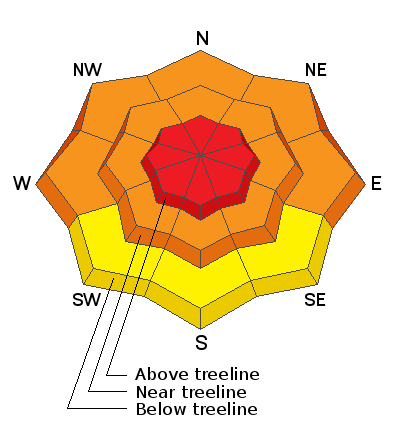
Low
Moderate
Considerable
High
Extreme
Learn how to read the forecast here


